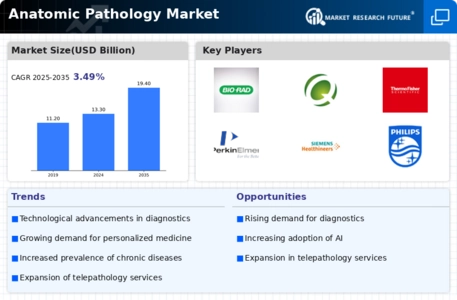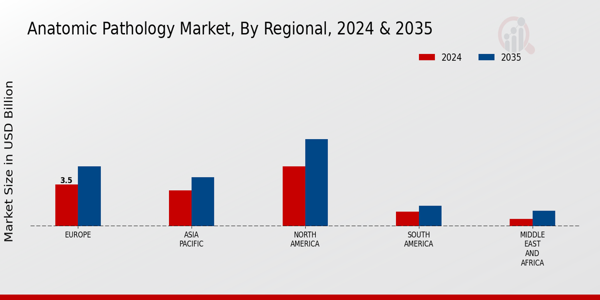Market Analysis
In-depth Analysis of Anatomic Pathology Market Industry Landscape
The way the anatomic pathology market works is based on its function as a diagnostic tool for understanding diseases. Anatomic pathology is the study of tissue samples, which gives doctors important information about the causes, nature, and development of many medical diseases.
Image-processing technologies that change quickly have a big effect on how markets work. Digital pathology and whole-slide imaging are two examples of new imaging technologies that have made anatomic pathology more accurate and efficient. These technologies affect the accuracy of diagnoses and market trends.
There is a lot of focus on cancer diagnosis and stage through structural pathology in this market. Finding out the type and stage of cancer requires a pathologist to look at tumor cells. This increases the need for pathology services and affects market growth.
We need lab services to help us understand and treat diseases like heart disease, diabetes, and neurological disorders that are becoming more common.
In the area of tailored medicine, anatomic pathology is very important. For example, studying tissue samples can help doctors make treatment plans that are more effective for each patient by giving them useful information about their health and the way the market works.
Modern structural pathology is starting to use genetic pathology more and more. Genetic tests and molecular diagnostics are two examples of molecular methods that help with physical measurements. They help us learn more about diseases and change market trends.
Pathology labs are becoming more and more automated, which is good for the market. Automated processes make labs more productive, cut down on wait times, and improve the accuracy of diagnostics. This changes how the market chooses lab tools and systems.
A fast-moving trend in the market is the spread of pathology services. Telepathology and online advice services make it possible for pathology experts to share their knowledge across borders. This makes markets more accessible and encourages people from different countries to work together.
Anatomic pathology is a key part of drug research and clinical studies. Pathological examinations of tissue samples are very important for figuring out how well a medicine works, how safe it is, and how to find biomarkers. This changes the way the market works in pharmaceutical research.
The focus on quality control and standards in anatomic pathology has a big effect on how the market works. Following standard procedures and approval standards makes sure that lab results are accurate, which affects trust and success in the market.
There are more schooling and training programs based on pathology, which is good for the global market. Continuing to teach doctors, lab technicians, and other health care workers raises knowledge and improves skills, which has an effect on market trends.
How healthcare systems handle reimbursement policies has an effect on how markets work. The amount and type of compensation for anatomic pathology services affects how labs work, which in turn affects the growth and usability of the market.













Leave a Comment